#cantonese opera
Text

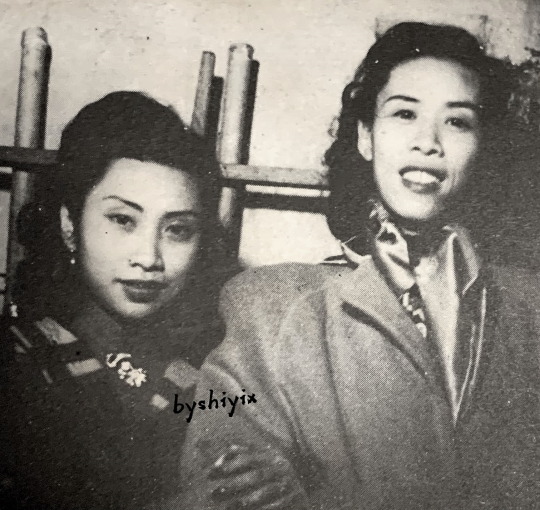
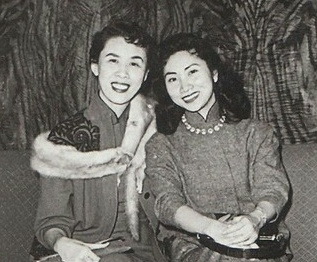
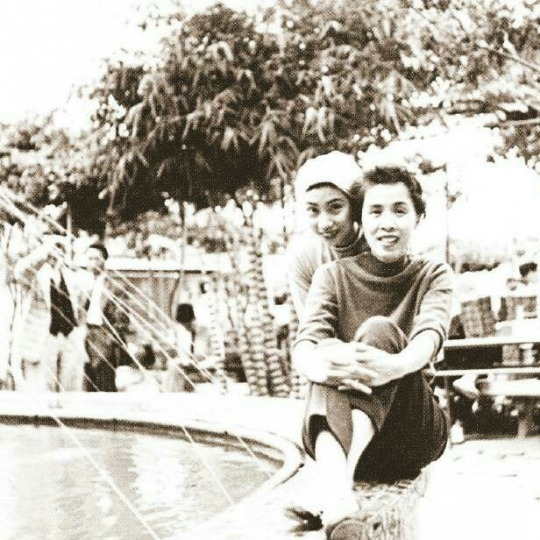

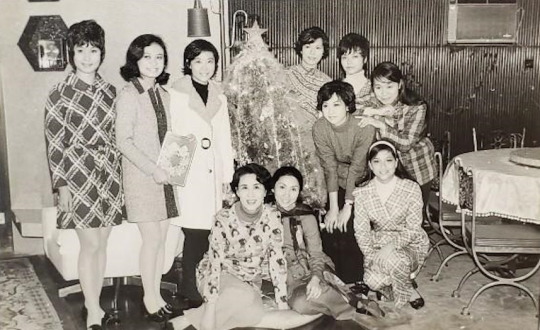
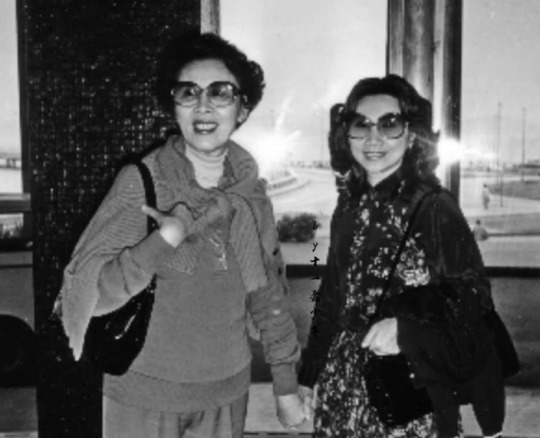

Female Queer Icons of Hong Kong // Yam Kim Fai (任劍輝) and Pak Suet Sin (白雪仙)
Photo 1: Promotional photo for 1955 contemporary movie The Model and the Car (玉女香車) (no video available) (Source: LCSD Museum Collection Search Portal)
Photo 4: Photo from Sin Fung Ming Opera Troupe's 1958 trip
Photo 5: Photo from a 1962 newspaper feature on Yam, Pak, and others at their (?) summer villa in Central, Hong Kong
Photo 6: Christmas celebrations with Yam, Pak, and their protégés of the Chor Fung Ming Troupe
Far and away the most iconic duo in Cantonese opera, Yam Kim Fai (任劍輝) and Pak Suet Sin (白雪仙) – commonly referred to simply as Yam-Pak (任白) – were famed for their partnership both on and off the stage… Click below to learn more!
Edit on 28/07/2023: Updated to link to a photo of the entrance to the Hong Kong Heritage Museum’s Pop Culture 60+ exhibit, and to add information regarding Yam and Pak's marriage status.
Iconic? How?
Yam-Pak are the face of Cantonese opera; you can't talk about the latter without mentioning the former. It's to the point where a gigantic picture of them graces the entrance to the Hong Kong Heritage Museum’s permanent exhibition on Hong Kong pop culture’s evolution across the past 60 years (“Hong Kong Pop 60+”) - they are the first thing you see upon entering!
Best known as the originators - with Yam playing the male leads and Pak the female leads - of five masterpieces of Cantonese opera, namely:
1. Princess Cheung Ping (帝女花)
2. The Legend of the Purple Hairpin (紫釵記)
3. The Dream Tryst in the Peony Pavilion (牡丹亭驚夢)
4. The Reincarnation of Lady Plum Blossom (再世紅梅記)
5. Butterfly and Red Pear Blossom (蝶影紅梨記)
(Note: Princess Cheung Ping, Purple Hairpin, and Butterfly and Red Pear Blossom were made into abridged movie versions, with the Sin Fung Ming troupe members reprising their roles from the theatre productions. Also, the "Fragrant Sacrifice" (香夭) duet from Princess Cheung Ping (movie clip) is one of - if not the most - famous songs in Cantonese opera.)
Yam and Pak were the leading pair and co-founders of the legendary Sin Fung Ming Opera Troupe (仙鳳鳴劇團; 1956-1961), which is widely held to have pushed Cantonese opera forward as an artform due to Pak and scriptwriter Tong Tik Sang’s (唐滌生) emphasis on poetic libretti and adapting source material from Chinese literature and history. (Note: it has been common practice since the 1930's for Cantonese opera troupes to be founded by key actor(s).)
They were also very active in the Hong Kong film industry in the 1950's, being paired in over 40 movies together across roughly 8 years. One of those – the aforementioned Butterfly and Red Pear Blossom (蝶影紅梨記) – is the sole Cantonese opera movie on the Hong Kong Film Archive’s 100-Must See Hong Kong Movies list (IMDB list / archived version of the official PDF). It's a well-deserved inclusion - check out this beautifully-shot dance scene.
Even their post-retirement activities had a significant effect on the industry! In the early 1960’s, they held auditions for prospective students and provided - for free - systematic, hands-on training to those who passed; Yam and Pak even hired other veterans to teach skills they personally were not as familiar with. Prior to this, apprentices were expected to learn primarily from observing their masters, and to pay handsomely for the privilege. Yam-Pak’s methods proved exceedingly effective: the Chor Fung Ming Opera Troupe (雛鳳鳴劇團; 1963-1992) starring their apprentices reigned supreme in the 1970’s-1980’s. Following this success, Cantonese opera institutes - most notably the major 1900s-era guild, the Chinese Artists Association of Hong Kong (八和會館) - started to offer systematic coaching to young hopefuls in the 1980's.
Okay, so why are they queer icons specifically?
The lazy answer is that they're queer icons because nearly all of Yam's roles were male, so Gender is involved by default, and since most hit Cantonese operas of the time were romances, that means you get to see two female actors performing being in love onscreen (and also on stage, but there aren't any video recordings from back then). So far, so Takarazuka Revue.
Female actors playing male roles in Cantonese opera
To give some context, each Cantonese opera performer specialises in one of four major role-types, and Yam was a sung (生) - i.e. an actor specialised in playing standard male roles. Female sung were fairly common in the 1910's-1930's due to women being banned from performing with men during that period, but when the ban lifted in the mid-1930's, many troupes shifted towards cis-casting. Yam was pretty much the only one whose popularity survived the transition. Just take a look at the huge number of Cantonese opera movies produced during the 1950’s-1960’s – you’ll be hard-pressed to find a female sung other than Yam, let alone one with top billing.
Happily, thanks to Yam's immense popularity, her profilic film career (over 300 movies!), and the prominence of Sin Fung Ming works in the Cantonese opera canon, there has been a resurgence in female sung which endures to this day. Two noteworthy examples are Yam's protégé Sabrina Lee/ Loong Kim Sang (龍劍笙) - a star in her own right - and Joyce Koi/ Koi Ming Fai (蓋鳴暉), one of the biggest names still active in the industry.
(Note: perhaps due to cinema being more "realistic" in nature, Yam's early movies often involved her playing female characters cross-dressing as men, including in some Cantonese opera movies. However, she received increasingly more male roles as her fame grew, and from the mid-1950's onwards she was playing male characters onscreen nearly exclusively-- even in non-Cantonese opera movies! See Photo 1 above.)
What sets Yam and Pak apart is that they were particularly known for their chemistry. Long before Sin Fung Ming's formation in 1956, the advertising copy for their first Cantonese opera movie together - Frolicking with a Pretty Maid in the Wineshop (酒樓戲鳳, 1952) - declared "Only this movie has Yam-Pak flirting on the silver screen" (source - 華僑日報 1952/05/23-26). And indeed, they were popular for their flirtatious duets: their Cantonese opera works invariably contained at least one, and such scenes made it into some of non-Cantonese opera (i.e. "contemporary") movies too. In fact, there are not one but two contemporary movies where Yam and Pak's characters are not paired up and yet still sing a duet together in such a way that their significant other(s) become convinced that the two are in romantically interested in each other - see 1952's Lovesick (為情顛倒) and 1956's The Happy Hall (滿堂吉慶) - a weirdly specific situation which doesn't crop up in the other, non-Yam-Pak movies I have seen.
Speaking of contemporary movies, let's talk about a certain plotline that keeps cropping up in works featuring the both of them and where Yam plays a woman! Six of the eleven movies which fit that criteria involve Yam's character cross-dressing as a man (a common characteristic across Yam's handful of female roles), and Pak's character falling for her. Nothing ever comes of it, of course, but, um. It was certainly a trend. Actually, even their very first movie together - 1951's Lucky Strike (福至心靈) - falls into this category.
Such storylines, and the emphasis on their chemistry, are particularly interesting given that both Yam and Pak remained ostensibly unmarried throughout. This was unusual for female performers of their stature, who tended to wed in their twenties, often to fellow-actors or wealthy men (e.g. Hung Sin Nui/紅線女, Fong Yim Fun/芳艷芬, and Tang Pik Wan/鄧碧雲)... In contrast, by the time Yam-Pak retired from the stage in 1961, they were both over 30 years old and without husbands.
Also, did I mention they were popularly believed to be living together? There doesn't seem to be any conclusive evidence either way... although it's a little strange that separate newspaper pictorials depicting "Yam at home" and "Pak at home" seem to be of the same location... however what is conclusive is that they did spent a lot of time together offstage. Pak has talked about how when they had no guests over, Yam would watch TV by herself while Pak was in the living room (source - p93), and protégé Mandy Fung/ Mui Suet Sze (梅雪詩) has said that Pak would sometimes cook for Yam at home (source - 03:53~). They would also celebrate birthdays, New Year's, and Christmas together (see Photo 6 for an example of the latter).
Shortly after Yam's passing in 1989, Pak set up the Yam Kim Fai and Pak Suet Sin Charitable Foundation (任白慈善基金) to support the arts and provide welfare for the elderly. In 1996, Pak made a large donation to Hong Kong University, resulting in one of the buildings being renamed Yam Pak Building (任白樓) in thanks (source).
Thanks for reading! Please feel free to DM me or send an ask if you have any questions, or are just interested in learning more.
If you made it here, have this bonus piece of trivia - Yam and Pak were also well-acquainted with Hong Kong's preeminent queer icon, Leslie Cheung (張國榮), who was a massive fan of theirs. Sadly there don't seem to be any pictures of them before Yam's passing, but here's one of Pak (centre) having afternoon tea with Cheung (left) and his long-term romantic partner Daffy Tong (唐鶴德) (right) at the Cova cafe in the Pacific Place shopping mall.
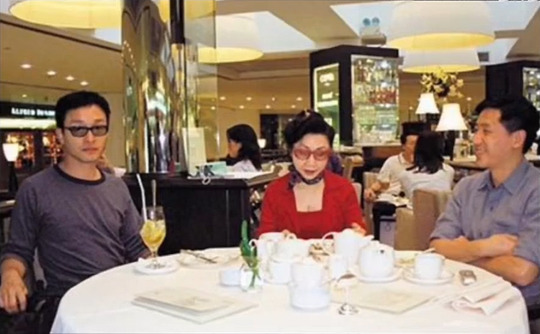
#wlw recommendations#sapphic#lgbtq#asian lgbtq#hong kong#theatre#cantonese opera#chinese opera#yam kim fai#leslie cheung#pak suet sin#yampak#yambak#pak sheut sin#bak sheut sin#hong kong queer icons#not me hastily adding tags because i keep forgetting certain ones
151 notes
·
View notes
Text
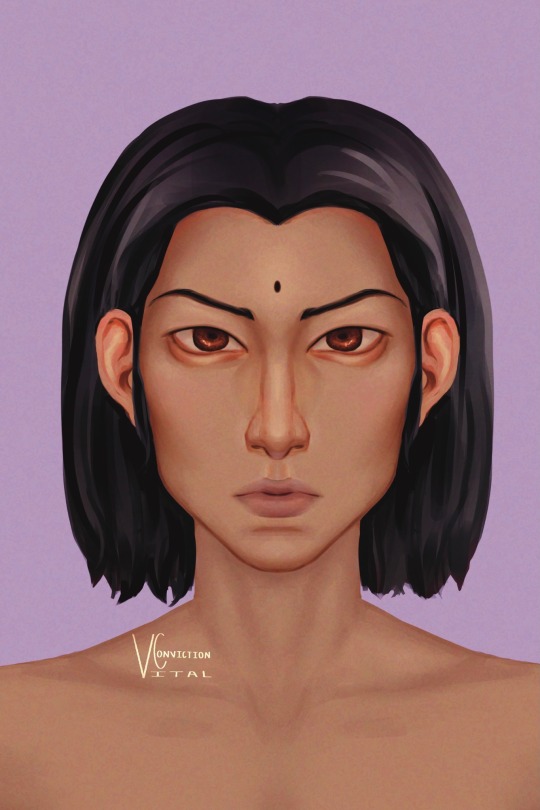

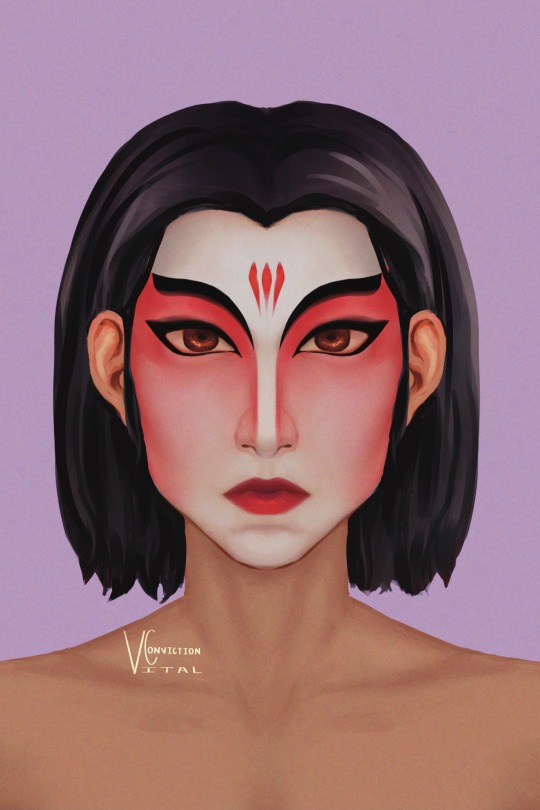
tseng! I was attempting to make a play off cantonese opera makeup and opera masks to invoke a tiger feeling but I don't think I got it across so I made another version where I removed the added forehead adornments that act mostly as a huadian. open to suggestions for the makeup :)
#tseng of the turks#ff7#ffvii#my art#main ff7 au#was tearing my hair out looking at tiger pics. I may scrap tiger and go snake instead since his zodiacs a snake#tiger was chosen because tigers are fucking awesomee#also because specifically their stripes#thought itd make a good adaptable design!#oh MY HUBRIS!#MY HUBRIS#and yes hes heavy on blush on purpose he likes it#chinese opera#peking opera#cantonese opera#huadian
17 notes
·
View notes
Text
esther eng- openly lesbian filmmaker!!
i just found out about esther eng (伍錦霞) the first chinese female filmmaker to make chinese language films in the us and hong kong.
her love for films started from watching cantonese operas!! she made many films in her lifetime, its such a shame most of the films she made are now lost films, except for two films: golden gate girls and murder in new york chinatown.
she was a butch lesbian and there was no controversy around that because in cantonese opera its normal for actors and actresses to crossdress. another fact that made me smile so much is that her grandparents came from toisan (台山)!!! literally punching the air rn bc im from toisan, i speak cantonese and im also a lesbian i am literally so happy.
i also loved how people called her by the nickname "霞哥" ("ha brother" in english)
i literally cannot express how much finding out about esther eng made my day
also if your interested this is the article i read


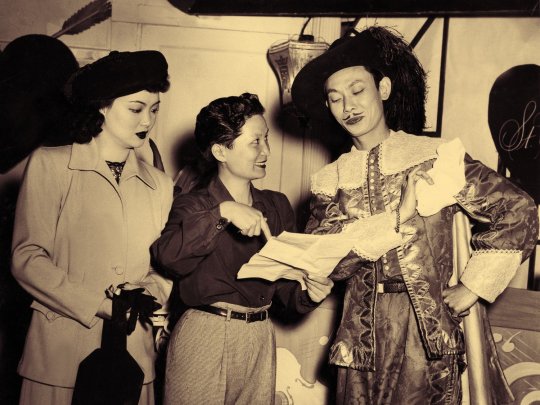
#lesbian#butch lesbian#butch#chinese lesbian#wlw#lesbian history#lgbtq history#chinese lgbtq#chinese american history#chinese american#taishan#toisan#台山#cantonese#cantonese opera#hong kong cinema#lgbt cinema#taishanese americans#chinese filmmaker#chinese film#lgbtq cantonese#esther eng#伍錦霞#lgbt chinese history#1930s film
182 notes
·
View notes
Text
I am going to the museum today because there’s a cantonese opera exhibit I want to visit for my theatre project, but I also hope there’s a place for me to just sit and get some work done. I’m very excited.
I’m going alone (and surprisingly, looking forward to it), but my friend may be joining me after her band practice.
I can’t think of a better way to spend an afternoon :)
6 notes
·
View notes
Text
kny but chinese opera inspired!
doodled rengoku in a wusheng outift because of his insane eyeliner and spiky brows, only went downhill form there (but he remains my favourite)
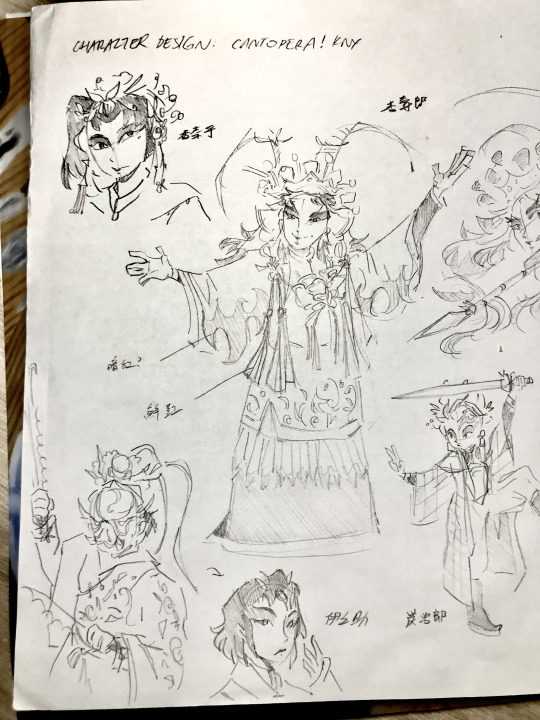
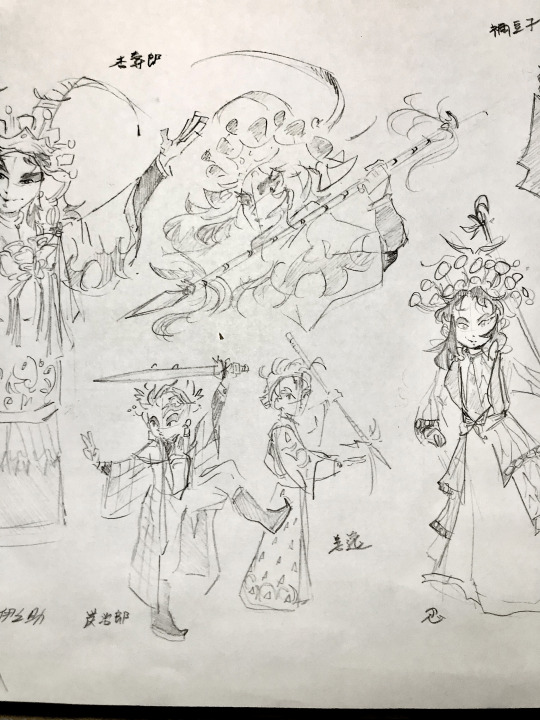

if we can put them in modern clothes we can also put them in cool traditional canto/peking opera gear. but also make them look like their actual outfits, which was hard considering they’re all bold pattern on black
#kny#kimetsu no yaiba#demon slayer#fanart#cantonese opera#peking opera#personally know more about canto op but pinterest’s only giving me peking costumes#so fusion it is
8 notes
·
View notes
Video
youtube
Mysterain - 故卷 - Live 2020
2 notes
·
View notes
Text



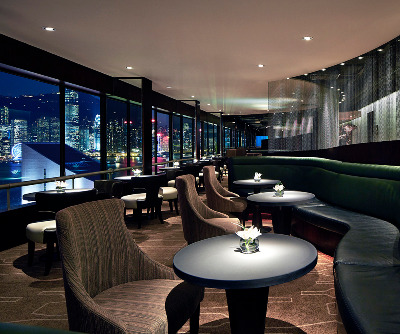
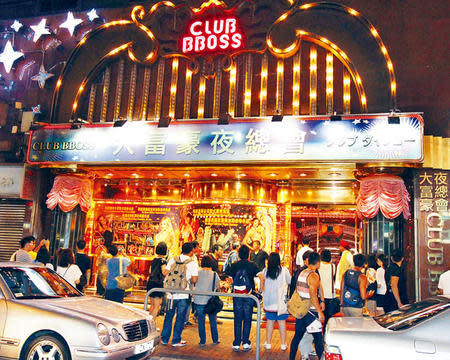





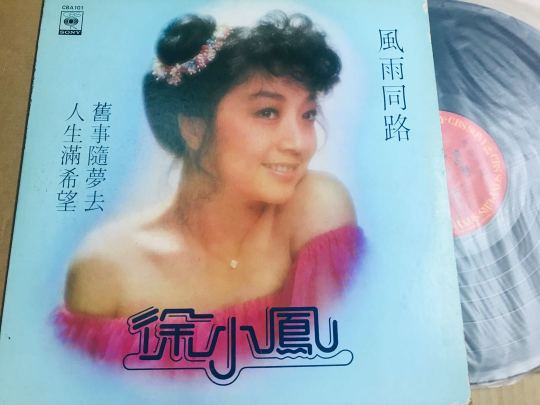
Waning Interest In Nightlife—Our Past Glory And What Are The Challenges Of The Night-time Economy In Hong Kong?
Some said, “I am all about nightlife. I live during the night.” Some said, “In nightlife, you can become a star. While in the daytime, you can be a nobody.” Some said, “I don’t like going out. I hate clubs. I hate being around too many people.”
A clothes vendor in the well-known Temple Street Night Market in Hong Kong told South China Morning Post, “The Street seemed lifeless and quiet, with many other stallholders gone for the day. I have been running this stall for more than 40 years and business had never been this bad.” The newspaper reported that in better times, Temple Street presented a mix of old and new. It drew visitors who swarmed its numerous stalls selling clothes, souvenirs, jade, antiques and watches. Traditional fortune-tellers beckoned and Cantonese opera singers performed late into the night, while dai pai dong (‘hawkers’) food stalls dished out everything from chili crab to steamed fish. The subdued state of the street market reflects the situation across the city, alongside the trend of Hongkongers heading to mainland Chinese cities such as Shenzhen to enjoy weekends.
Last night, I went to Tsim Sha Tsui, the touristy area, to look for a restaurant at 9:30p.m. Some were closed. Many were preparing for closing. It was a deeply depressing scene.
Many in Hong Kong, since 1970s, had wandered around in the streets at night until they found no place to stay or nobody else to hang with at midnight.
Hong Kong used to be energetic, boisterous and loud after 8 p.m. The urban noise was constant. Neon lights were colourful, bright and reliable. Such signs took a rest only at AM hours. Shopping, dining, night-time snacking, singing, massage, clubbing and socializing were everywhere.
Some attributed the night-life decline to the lack of tourists who can afford. Some suggest that the lifestyle of people here have changed: they feel happier on emotional front at home. They would rather enjoy online shopping, watching Netflix, cooking, meeting cyber-friends and gym exercising—avoiding being overstimulated by others. Some put the blame on the poor economy of Hong Kong because people want to spend less. Some venue operators complain that there is a serious shortage of 20% manpower in Hong Kong and they cannot hire enough workers who are interested in night-shift work. Some lament that more than 200,000 people have emigrated from this city. Others explain the social phenomenon by the outflux of more than 300,000 local people on Saturday and Sunday for ‘weekend getaways’ to the Greater Bay Area cities in Guangdong. Some feel that the government’s controls on hawkers and street busking are too tight. Some comment that the local handicrafts sold are not attractive or creative.
A vibrant and mixed ‘night-time economy’ is important as it can encourage tourism, boost the local spending power and contribute to shaping trendy places where people want to live. This is why some youngsters like to live near Soho, Central. The night-time economy also makes a significant contribution to the employment situation. To the dismay of the government, people in Hong Kong tend to spend less and less. We are an aging population and more and more citizens survive on savings. Thus, saving money produces a sense of security, especially when people are older. Night activities which eat away at one’s bank balance is considered quite unnecessary. Economically, we are facing a recession. Consumptions inevitably slow down especially for expensive nightlife entertainments inclusive of pubs, bars, nightclubs and shows.
From a family’s point of view, it is not a good idea to suggest staying out late at night. Being out late at night can expose teenagers or girls to various safety hazards such as encountering bad people, getting involved in altercations, or becoming victims of crimes. Staying awake through the night takes a toll on physical health. Fatigue and low energy levels in the daytime may worsen work performance. Parents should return home early and spend more time with children. Children will feel that their parents value them. In the old days, a lot of parents in Hong Kong went back home after 10p.m. and the poor parent-child interactions would harm a child’s development. People should be attracted by the happy moments of a family, instead of the desire and seduction typically associated with night activities outside.
For myself, I want the services sector such as doctors, hairstylists, physiotherapists and herbal treatment centres to close later, ideally till 10p.m. Many people are like me—always in a rush during the day and it will be excellent if we could spend few hours after work on personal grooming and healing. Is this night-time economy?
London, New York, Paris and Amsterdam are the great cities, when it comes to ‘night-time cultural economy’. Cinemas, musicals, light shows, plays, stand-up comedies, opera, ballet, dance and concerts, are abundant and liven up the night. These cultural places make the whole area full of vitality. Look at the number of pizza restaurants in New York for a midnight snack! Hong Kong may follow and use evening cultural activities to captivate the younger tourists who are more educated.
In mainland China, some hospitals have extended their operating hours. The official said, “Any attempt to get people to spend more money at night is a good idea.” The thing to watch out is that the late-night operating hours may not necessarily bring the same ratio of income compared with day-time operating hours.
Ernest Hemingway told us, “Night is always darker before the dawn and life is the same.” Extending business hours will not help our economy much. Recalibrating the tourism fundamentals of Hong Kong towards cultural attractions is the more appropriate direction.
Maurice Lee
Chinese Version 中文版: https://www.patreon.com/posts/xiang-gang-60zhi-93391105?utm_medium=clipboard_copy&utm_source=copyLink&utm_campaign=postshare_creator&utm_content=join_link
Hong Kong Wanchai Night Market https://youtu.be/OkRU0NKumz4?si=LfP0uMbzK8wQcXCG Acknowledgement - hokoonho
Hong Kong Temple Street https://youtu.be/zucAog03Ucc?si=b6kLiRf5J3NjEiw7 Acknowledgement – 看見香港
Hong Kong at Night https://youtu.be/01G05Z8rC1Y?si=ulmwG6iVMnyJNaz1 Acknowledgement-Island Hopper TV Travel Highlights
Sheung Wan Gala Point https://youtu.be/y8dtrv0tJ1M?si=KzxOj20uBAi4f04A Acknowledgement-Mike Ling
Song 《 兩相依》 https://youtu.be/Kvo9uOt405A?si=xjYR9-MwZXMefbTh Acknowledgement – charmer0966
0 notes
Text

My favourite little experiment
1 note
·
View note
Text
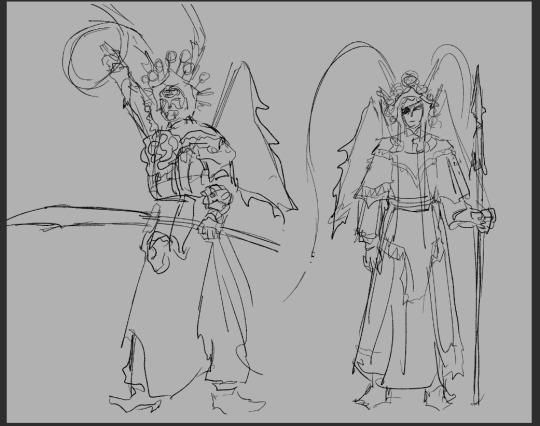
practicing some stuff
#tofu doodles#these are ocs btw. left lady is from hat tuong (vietnamese opera)#right lady is from cantonese opera lol#i was inspired by this one opera spidersona on twittar. pondering.#vietnamese opera#chinese opera#uhhh the 1st lady is just referenced from a pic but the 2nd is just me referencing outfits
12 notes
·
View notes
Text
this flower-like princess has tears in her eyes as she burns incense. who would dream that our dream wedding would end in blood and death? even after death, we will remain entangled like these two trees
帝女花之香夭
3 notes
·
View notes
Text
i need to watch yam kim-fai’s films i’m weeping tears of blood where are they
2 notes
·
View notes
Text
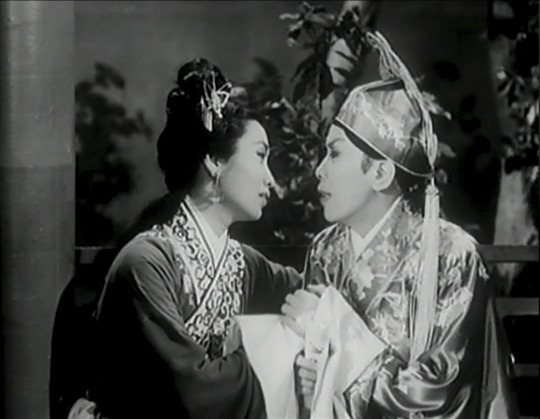
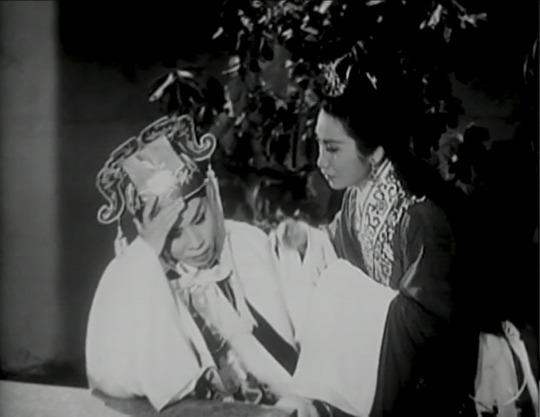

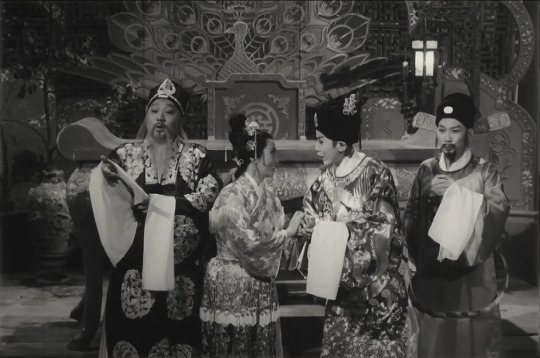
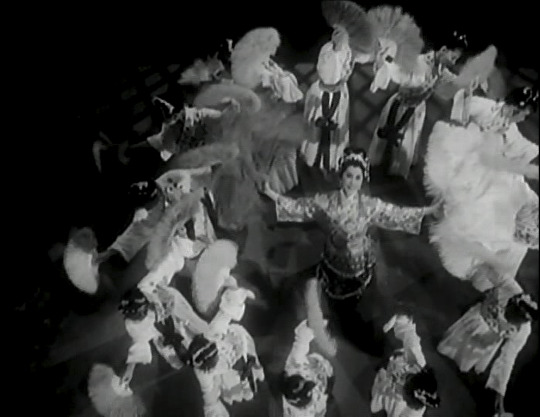
Screening Announcement! (Dec 10th & 17th, 2023)
Update as of 6 Dec 2023: There are still decent seats left for the 6pm & 9pm showings on Dec 10th, and for all four screenings on Dec 17th!
If anyone here will be in Hong Kong this December 10th or 17th (both Sundays), and has even a passing interest in Yam Kim Fai and Pak Suet Sin (see my post on them here), queerness in East Asia and/or the 1950’s, or Chinese opera, I strongly urge you to go to one of the eight screenings of the restored version of Butterfly and Red Pear Blossom (蝶影紅梨記)!
Not only is it a great romantic comedy (yes, really), it’s also a very rare opportunity to see a classic Cantonese opera movie – or indeed any black and white Hong Kong movie – with English subtitles and in 4K resolution. For a taster, check out this excellent dance scene (not 4K) and this video from the Hong Kong Film Archive about their restoration efforts!
On top of that, it’ll be showing in the cinema of the storied Sunbeam Theatre (新光戲院), which opened in 1972 and is Hong Kong’s last commercial Cantonese opera theatre. (It must be added that being able to go there will soon become an even rarer opportunity; the venue will sadly be closing in 2025 as heritage is apparently a joke in Hong Kong.)
Here's a quick outline of the story for those who need a bit more convincing:
Penned by the Shakespeare of Cantonese opera, Tong Tik Sang (唐滌生), this retelling of Yuan-dynasty opera Tale of Red Pear Flower (謝金蓮詩酒紅梨花) starts off fairly sober - courtesan So-chau (Pak Suet Sin) and scholar Chiu Yu-chau (Yam Kim Fai) are long-distance lovers, but before they are able to meet in person for the first time, So-chau is forced to fake her death to avoid being sent off to a barbarian warlord. But then it morphs into an unexpected romantic comedy: in her escape, So-chau ends up at a relative’s house… only to find that Chiu will be moving in as a guest there that very night. Unfortunately for her, she’s been forbidden by her uncle from disclosing her identity for fear of disrupting Chiu’s studies, and Chiu is extraordinarily – albeit adorably – dumb.
Apart from the two leads being played by women, it’s really easy to read queer themes into how So-chau is desperate with longing and yet unable to directly articulate her desires and identity, permitted only to hint and nudge. (As is the movie as a whole in some ways, since Hong Kong movies of that era were very prudish; even heterosexual kisses weren’t allowed onscreen.) Chiu, kind-hearted but oblivious, echoes the familiar figure of the queer crush. Also, Pak plays So-chau with the thirstiness of a marathon runner who hasn’t had a drop of water since the start of the race, so there’s that to enjoy too :)
Tickets are available on the Cityline website for HK$70 each (linked here – change the language to English by clicking “Eng” in the menu); note that you’ll need to make an account to make a purchase. Dec 10th and Dec 17th will both have four screenings each (12pm, 3pm, 6pm, and 9pm), but seating is very limited so you should definitely buy your ticket sooner rather than later!
#wlw recommendations#asian lgbtq#hong kong#cantonese opera#chinese opera#yam kim fai#pak suet sin#hong kong queer icons#yampak#yambak#pak sheut sin#bak sheut sin#theatre
24 notes
·
View notes
Text
Tonight we are thinking about what Brecht said about Chinese opera and Verfremdungseffekt.
Because like, sure, Chinese opera is highly codified in a way that western theatre really isn’t (e.g. ‘good guys’ have their faces painted red, villains have their faces painted white; makeup is extremely unrealistic; kings and generals and scholars and princesses and servants all have extremely codified and recognisable costume styles; specific hand and hair movements denote joy or anger or sorrow; most lines are sang; etc.). But if you ask people who grew up watching Chinese opera (not me, but my grandma and to a lesser extent my mum’s generation), they will happily rag on fuckboys in a given play much in the same way we would talk about how Claudio in Much Ado need to be bitch slapped.
And if you think about it, operas as well as modern musical theatre are also highly musical. But that didn’t stop the audience from projecting and identifying with the story. Ballets even; they are entire plays told through the medium of dance and people still feel for the characters.
(I will give him that the use of lighting and projection really destroys immersion in teh show though. The Cantonese opera recording I recently saw, it has a projection backdrop and it is so unnecessarily high tech for a period piece—as a lot of Cantonese operas are—that it was extremely jarring.)
So I don’t know. I think it might be worth exploring that while there are some truths to Brecht’s observation, it really only holds true in a theatrical tradition that does not have anything he describes? Otherwise—whether it is Chinese opera, or Broadway musicals, or western operas—things like music and codified dances are not really things that can alienate the audience.
#personal#this is brought to you by the two cantonese opera recordings i recently saw with my mum#they are stories i know since i was a kid but because they are written in like old formal chinese#(like what shakespeare is like to modern english speakers)#i didn't fully get the impact of the show until now#and i just have a lot of feelings
4 notes
·
View notes
Text
Today's Episode of Shit I Do To Write About Media
So I've been trying to get into Kabuki and Noh (especially Kabuki) to better understand stock characters, stagecraft, famous plays etc and apply that knowledge to my Japanese cinema/anime/Wano Arc analysis since I'm a massive weeb/film bro/Asian Studies Major, but either the free English language sources I'm using suck or I'm just approaching it entirely the wrong way because I now know some of the stories and the basics of kumadori but have understood fuck all about any other aspect of it? Maybe it's the linguistic barriers, which I always knew would be part of it, but I'm decently familiar with Japanese history, lit, and famous plays or narratives that have been adapted into Kabuki and Noh that I did not think I'd be this fucking lost. I have spent the last forever googling "what does red wig mean" and I *can't figure it out*
...The things I put myself through to try and write about one piece
#I swear to god my crash courses in Chinese operas and their influence on wuxia films were nowhere near this confusing#I'm not an expert but I can differentiate between Cantonese/Beijing/Sichuan etc and I know the makeup for roles and specific characters#I'm not even as well versed in them and I have not put in enough effort which is honestly kinda embarrassing given that I *am* Chinese but#I still understand them better than Kabuki!! And I've put in so much less effort#Noh is even worse#I am intimidated by people who actually understand it#wano country arc#kanjuro#one piece#Wano clearly Riffs on Kanadehon Chushingura(47 Ronin) and a lot of movies/period pieces but I'm trying to do better than state the obvious
1 note
·
View note
Text
not me starting a month of research on chinese culture so i can write one (1) farewell my concubine fanfic.....
0 notes
Text
muahahahaahaa i found 红鬃烈马 on the youtube >:D
the sound quality is a bit fuzzy but that has NEVER stopped me!!! 😈😈😈
#i have never watched a cantonese opera before!!#so this shall be a learning experience for me lol#红鬃烈马#birb still says#birb watches#ensmallening my art window to read the subtitles#as if im not fucking illiterate 🤣🤣🤣
0 notes